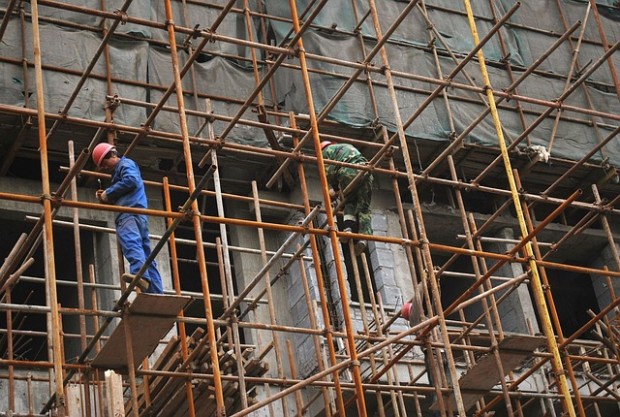Construction sites are dynamic environments where every precaution must be taken to ensure the safety of workers and the integrity of structures. One critical aspect of construction safety is scaffolding.
While scaffolds provide essential access and support for various tasks, they also pose specific hazards. Here are some scaffolding hazards you should know for a secure construction site environment.
(Photo : Pixabay/PublicDomainPictures)
1. Lack of Fall Prevention
When operating at a height, it is necessary to have the appropriate safety equipment, including personal protective equipment (PPE), fall arrest devices, and protection rails. The likelihood of injuries resulting from falls significantly increases in the absence of these items. The possibility of someone falling from a scaffold platform is always present, regardless of how well you maintain the cleanliness of the work areas on the scaffold platform.
As mentioned, the Occupational Safety and Health Administration (OSHA) established guidelines to develop strict standards for the safety of scaffolding, which mandates that guard rails be installed at 10 feet.
2. Poor Scaffolding Assembly
Planks that are either loose or weak have the potential to shift or break, which can result in a fall. Any scaffolding that is not structurally sound has the potential to collapse, causing tons of materials, equipment, and staff to fall to the ground and hurting anybody who is working in the area.
Be sure to take your time when constructing scaffolding, and make sure that you use the appropriate materials. Avoid combining parts from several manufacturers or systems since this may result in an unsteady construction. Ensure that all timbers, beams, fasteners, and other components are assembled correctly by performing a final inspection.
Moreover, the local weather conditions should also be considered, and preventative safety measures should be included to guarantee that the scaffolding can withstand severe or persistent wind gusts.
Also Read: TurtleHill Transforms First Industrial Zone into a Creative Cultural Gem: The Houjie Times Project
3. Electrocution
Work involving welding, cutting, or other high-temperature operations while affixed to a gantry introduces many electrical hazards. Therefore, workers must adhere to the electrical work on scaffolding guidelines. Be mindful of the potential electrocution risks that may arise from the specific nature of the scaffolding and the work being performed.
Accordingly, the potential dangers of electrocution are increased when scaffolding is constructed out of metal. Remember to avoid building scaffolding near energized power lines. A set of regulations established by OSHA governs the maintenance of proper clearance distances between power lines and scaffolds to safeguard workers and prevent potential electrocution risks.
4. Struck by Falling Materials
When materials or tools that have fallen from scaffolding sites hit individuals, it might hurt or kill them. According to OSHA's requirements, these people must be safeguarded from falling things, which must be done in one of two ways. One potential measure is to equip work platforms with toe boards or netting to restrict the descent of such objects to the ground or lower-level work areas. Thus, putting up barricades that physically prevent people from walking under work platforms is also an alternative that can be carried out.
5. Ineffective Safety Equipment
In every situation, it is essential to have the appropriate PPE, such as hard helmets, sturdy and non-slip work boots, and possibly tool lanyards. The risk of getting hurt or having an accident will significantly increase if these things are absent.
Related Article: 3 Workers Injured in Terrifying Collapse at Fort Lauderdale Construction Site Scaffolding







